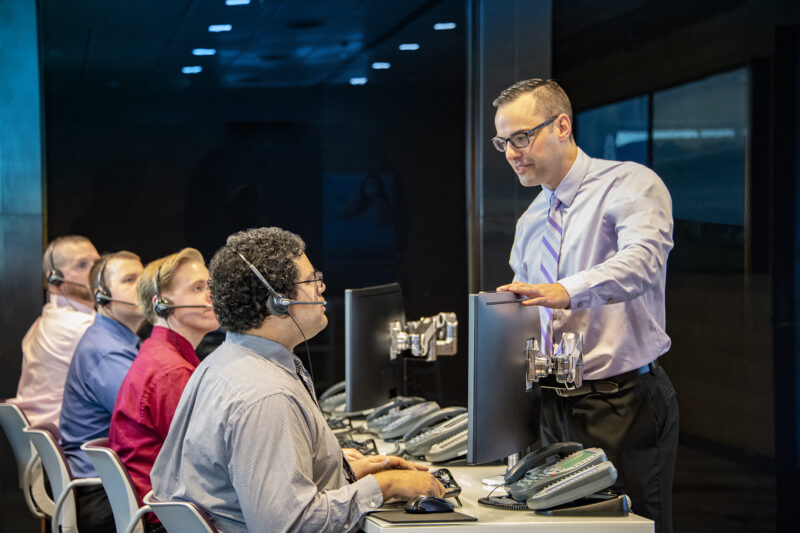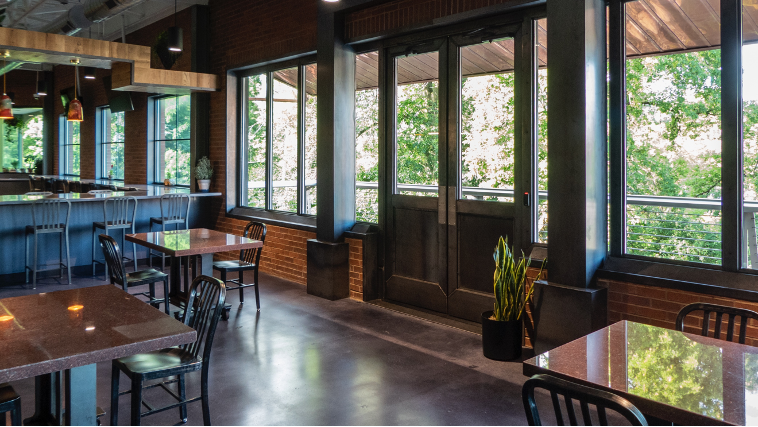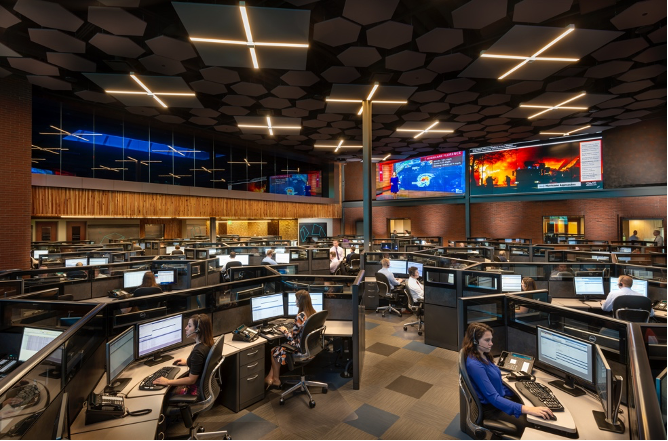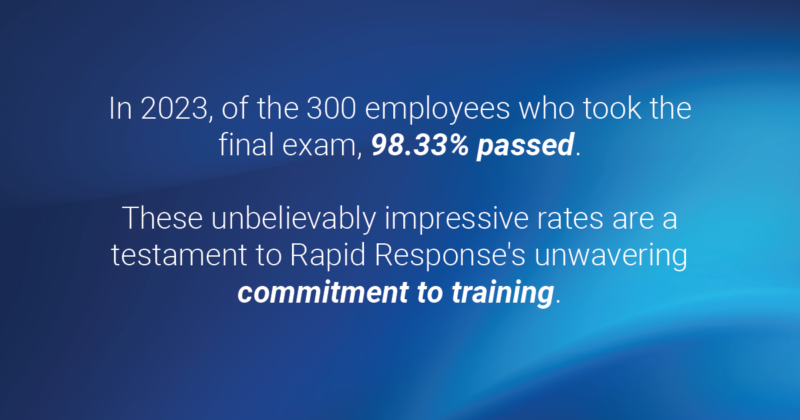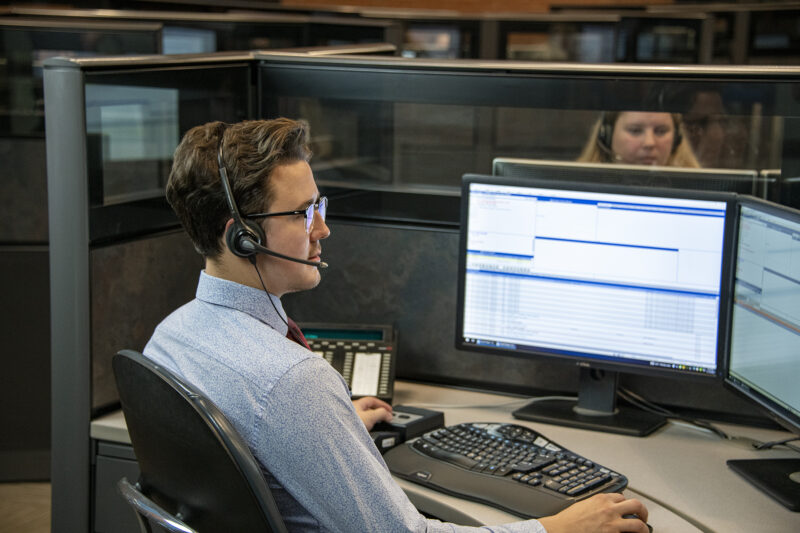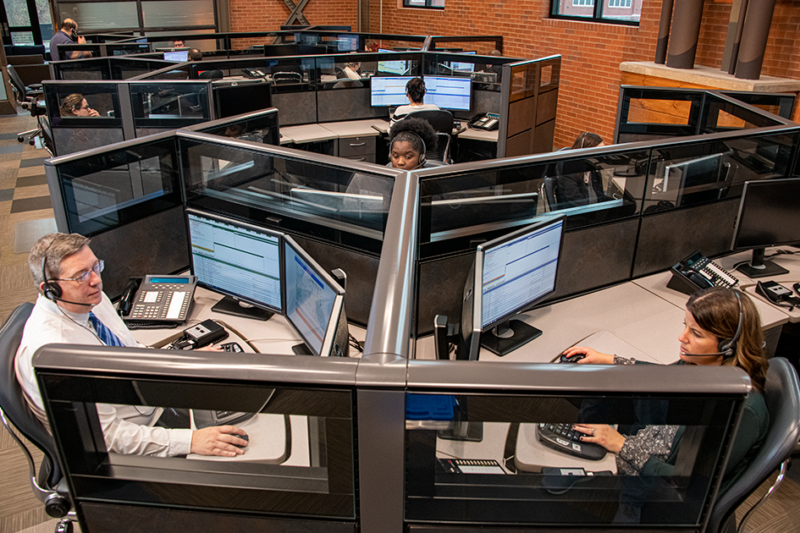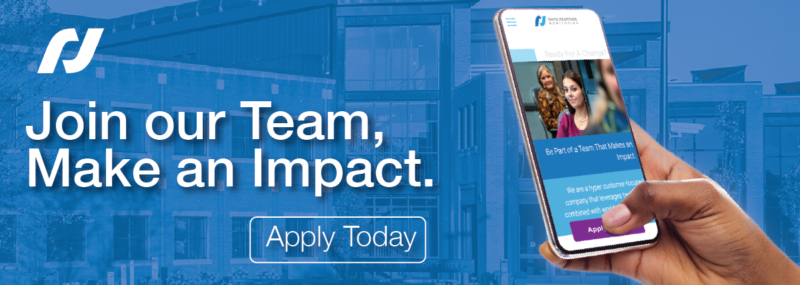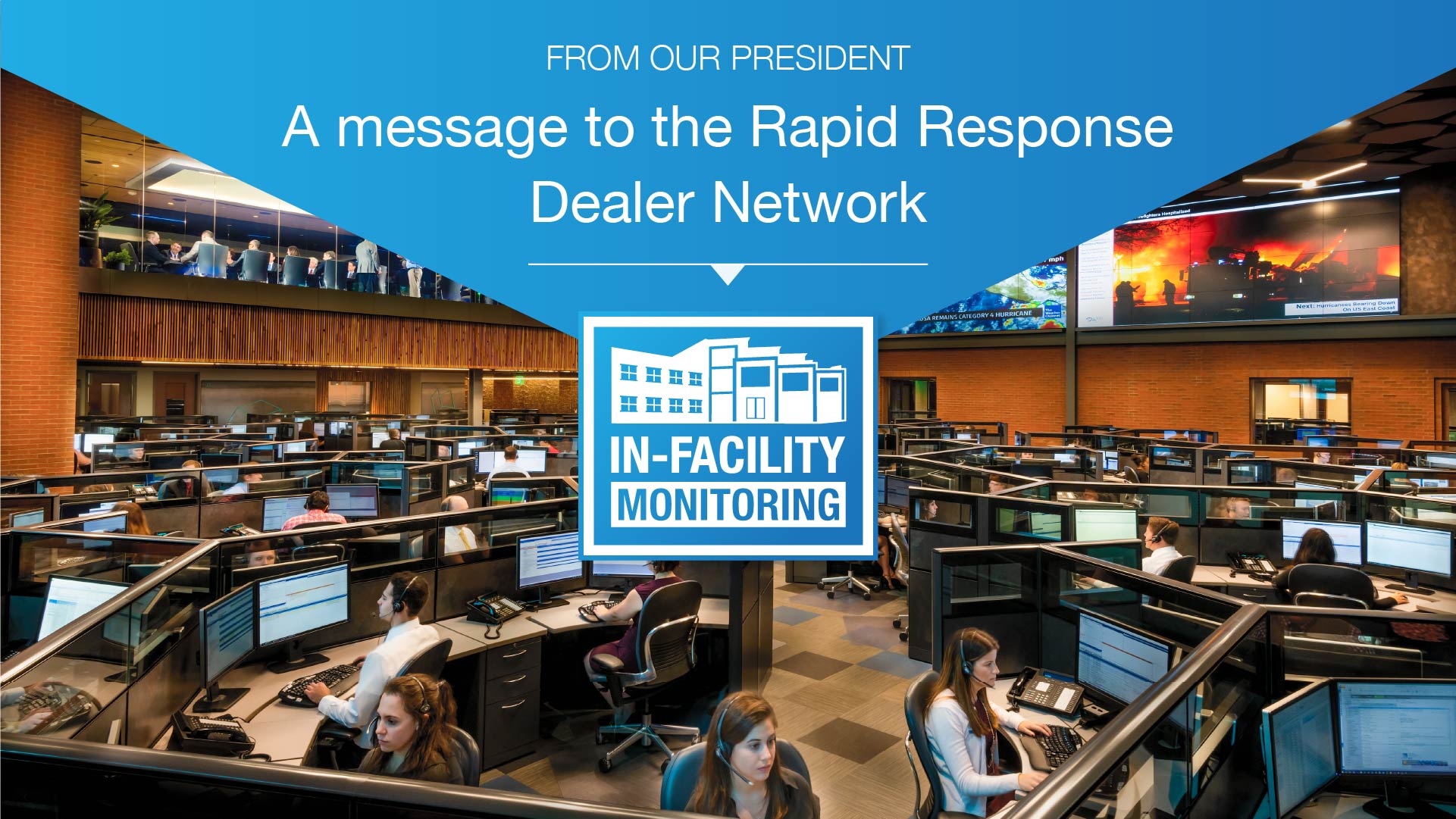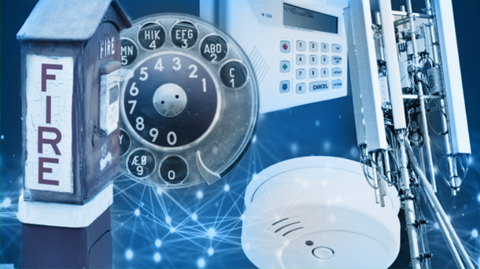Day 1
The first day of a new job often brings a dose of anxiety as one grapples with the uncertainty and discomfort that come with being a newcomer.
Having accepted the offer to join Rapid Response as a Digital Brand Strategist almost a month prior, the team wasted no time integrating me into the company’s culture.
Leading up to my start date, I received weekly touch-points, including newsletters featuring the Rapid campus and its various perks, calls from my soon-to-be boss, and e-mails outlining what to bring on the first day.
Approaching the Rapid Response facility, my unease transmuted to relief as the welcoming group of colleagues, eagerly awaiting the arrival of myself and the other members of my new hire class, excitedly greeted me.
While my responsibilities wouldn’t directly involve safeguarding life and property, Rapid Response believes all employees must establish a foundation for alarm monitoring and undergo the same initial 4-week training. Without delay, I was efficiently checked in and guided to the training classroom to meet my peers.
Amongst the group were new Monitoring and Data Entry Specialists, each of us embarking on distinct career paths yet commencing our journey from the same starting point. Awaiting at each workstation was a Welcome Kit with cool Rapid swag, a fresh notebook, and a headset.
As I sifted through the accompanying study guide, my initial excitement gave way to a resurgence of nervousness. Glancing at the coursework, I was taken aback by the content of its pages, entirely foreign to me. I set the packet down as the training team made their introductions.
Ron, Katie, and Christian stood before me, prepared to guide us through the process. Meanwhile, Kay (a trainer in training) was ready to offer support at any given moment.
It was promptly apparent that Rapid’s Training department had honed their onboarding process to perfection, swiftly equipping my new colleagues and me with e-mail accounts, extensions, and software logins.
Within no time, we efficiently underwent facial scanning for Monitoring Center access, had our photographs taken for badges, and embarked on a tour of the impressive facility.
Our parking passes were waiting for us when we returned, and we began to review the syllabus, buckling down for an intensive three weeks of classroom training followed by a week of practical application in the Monitoring Center and a two-part final exam.
Week 1
I must admit that before attending the class, my understanding of the alarm industry was quite limited.
When friends and family had inquired about Rapid Response, I found myself stammering and responding with a vague, “They work with alarms,” before quickly changing the subject, secretly hoping they wouldn’t dig any deeper.
Nonetheless, we spent the next week delving into Rapid’s proprietary monitoring software. Despite the significant volume of information we acquired daily, it was remarkably feasible to retain it.
The trainers skillfully incorporated various learning methods, keeping the class engaged through partner role-play scenarios, quizzes, and entertaining games designed to evaluate our understanding while applying the material.
Week 2
During our second week, time was spent split between the classroom, where we continued our learning, and in the Monitoring Center putting our newfound knowledge to the test alongside trainers.
Through test accounts, we gained an in-depth understanding of the nuances of action plans and call flow patterns for low-priority signals, honing our skills until the day arrived when we were ready to begin monitoring.
Amidst the bustling atmosphere of a host of Monitoring Specialists on the phone simultaneously, the Monitoring Center was surprisingly tranquil.
It was clear that Rapid Response had invested significantly in the ambiance of their facilities, proactively equipping thoughtful design features to improve the employee experience.
Considering that Monitoring Specialists often contend with discomfort due to the extended periods of seated work, Rapid brings Austin, a physical therapist, on-site weekly for private consultations. He meets with employees individually, offering guidance on chair and workstation adjustments to enhance comfort.
Side note: He even provided information on stretches to help with the tendonitis in my wrist that had been bothering me for months – thanks, Austin!
With plenty of practice on low-priority calls, which supplied customers with essential information about potential alarm system issues, we progressed to monitoring high-priority burglary, fire, and carbon monoxide alarms.
Week 3
Encountering high-priority alarms was quite daunting initially because, due to the possibility of a genuine emergency, the phone begins ringing immediately, giving the Specialist only seconds to process the information.
However, by the end of Week 3, I had become proficient in verifying verbal passwords and dispatching the authorities – something I never thought I’d say!
After days of continuous practice, my peers and I felt prepared to face our next challenge, the final exam. Although I was apprehensive, I found comfort in an encouraging statistic that our trainer, Christian, provided:
In 2023, of the 300 employees who took the final exam, 98.33% passed. Since the latest iteration of the exam began in 2019, only .02% of people have been unable to achieve a passing score of 80%.
These unbelievably impressive rates are a testament to Rapid Response’s unwavering commitment to training, and the numbers didn’t lie! Sure enough, each of my peers and I had passed the exam.
We were ready to celebrate this milestone, but as the second and final portion of the exam loomed, we returned to the Monitoring Center.
Week 4
Rapid Response prides itself on the professionalism of its employees and takes a strategic approach to maintaining the high standards that set Rapid apart from others in the industry.
To ensure consistent and exceptional customer service, all Specialists must follow the same protocol – which is where the Quality Assurance (QA) team comes in. QA periodically pulls a selection of calls from each Specialist at random. Once scored, the Specialist receives feedback on how to improve.
THE SIMULATOR TEST
While the written portion of the exam ensures that new Rapid employees understand the procedures, the Simulator test ensures their monitoring is up to QA standards.
Throughout the Simulator, trainers guide Specialists through mock scenarios, varying in difficulty. These scenarios range from handling low-priority signals and transferring customers to the Dealer’s service department to addressing an inbound call and instructing someone to evacuate their home due to a carbon monoxide alarm.
Quality of service is assessed based on a Specialist’s ability to apply procedural learnings and problem-solving skills in real-time, all under the pressure of interacting with a live (albeit simulated) customer.
4-WEEKS LATER, WE OFFICIALLY COMPLETED TRAINING! 🎉
Looking back on this moment feels bittersweet as it signified a divergence in paths as the group went our separate ways. Some returned to the Monitoring Center, diving headfirst into their roles as Monitoring Specialists. Over the following months, they would delve into even more advanced monitoring, working on video and medical alarms.
Beyond Orientation
Others swiftly transitioned to Data Entry training, progressing toward their designated positions. Although our journeys took distinct routes, the bonds we forged persisted, and it still feels comforting to see their friendly faces around the office and recall our shared experiences.
As for me, my training was far from complete. After training, I stayed in the Monitoring Center for another week, processing low and high priority alarms. For the next five weeks, my training progressed through shadowing and I learned from nearly every department in the company—Software Development, Technical, Data Entry, the Signal Management team, Dealer Support, Recruiting, the Account Transition team, Licensing, and Sales.
With each experience, I added another piece to the intricate puzzle.
Now, standing at the brink of my next challenge—Marketing—I can confidently (and in great depth) explain what Rapid Response Monitoring does and why they are unparalleled in the professional monitoring industry.

